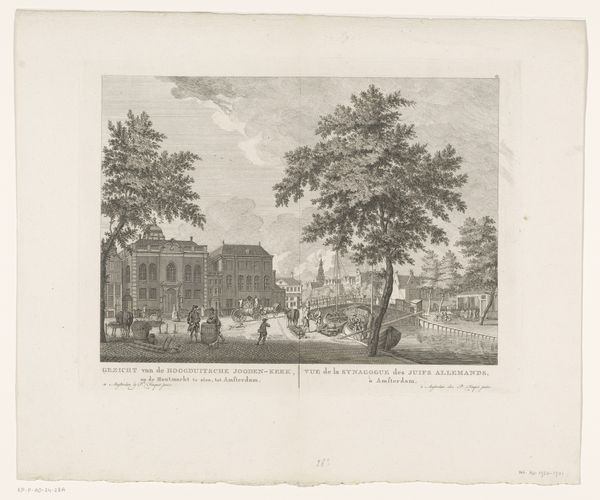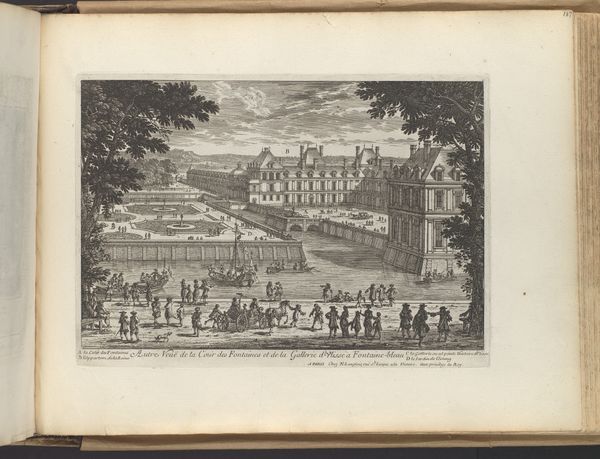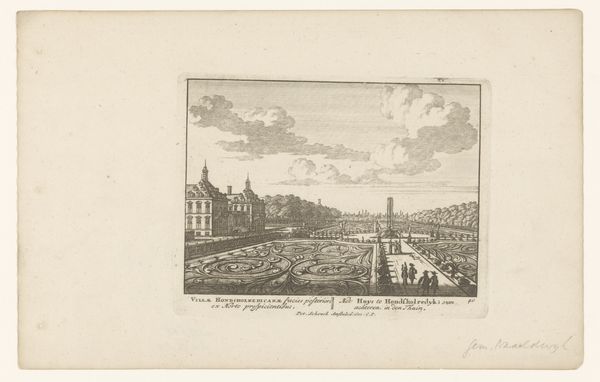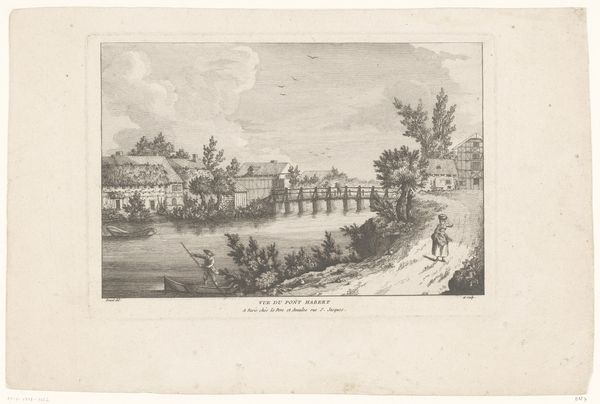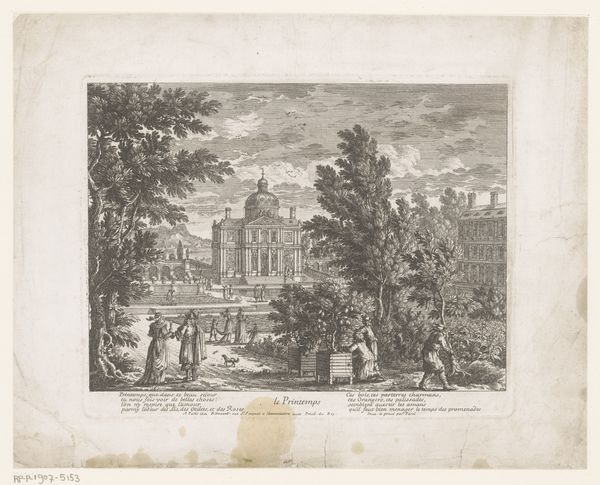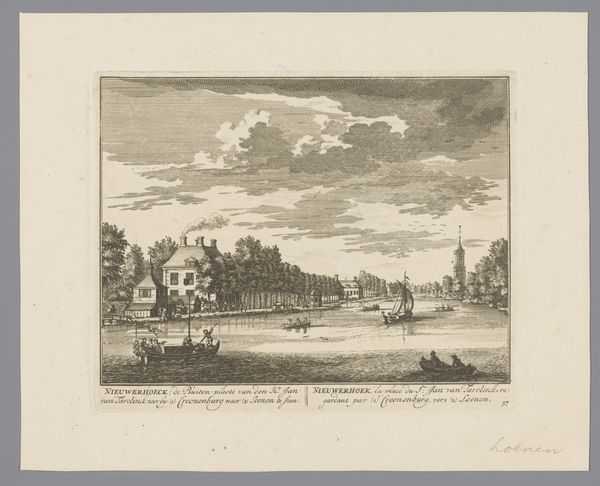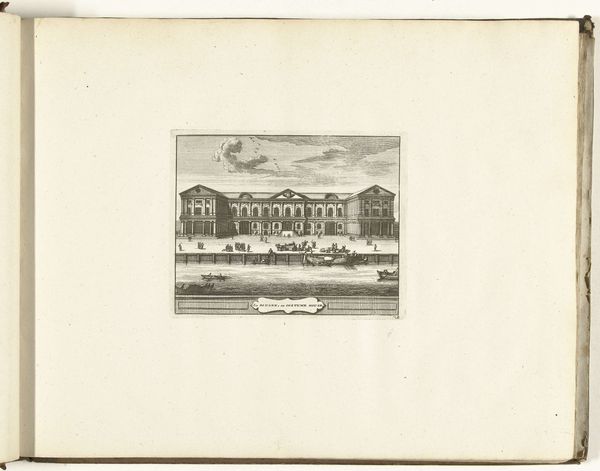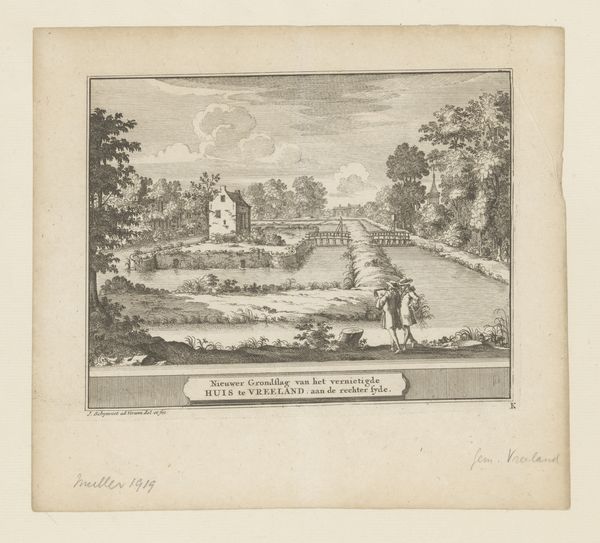
Gezicht op de Cour de la Fontaine in het paleis van Fontainebleau, 1726 1726
0:00
0:00
janlamsvelt
Rijksmuseum
drawing, print, paper, engraving
#
drawing
#
baroque
# print
#
paper
#
cityscape
#
engraving
Dimensions: height 177 mm, width 202 mm
Copyright: Rijks Museum: Open Domain
Jan Lamsvelt etched this scene of the Cour de la Fontaine at Fontainebleau Palace in 1726. The dominant symbol here is the formal garden—an emblem of man's control over nature. Gardens, like the one here, stretch back to ancient Persia, where they represented paradise on earth. In the Renaissance, the garden evolved into a stage for power, mirroring the order and harmony sought in society. Think of Versailles, where nature bends to the will of the king, a concept echoed here at Fontainebleau. The precise geometry of the fountains and parterres reflects a desire for control. This motif of imposed order resonates through time, appearing in different forms, even in modern urban planning. It reveals a deep-seated human need to structure and dominate our environment, a psychological projection of our inner selves onto the world around us. Each era reshapes this symbol, yet the underlying desire remains, resurfacing in new contexts.
Comments
No comments
Be the first to comment and join the conversation on the ultimate creative platform.



